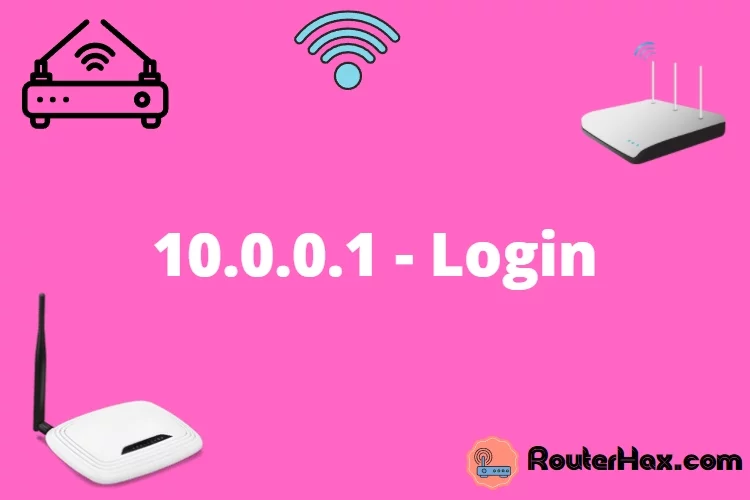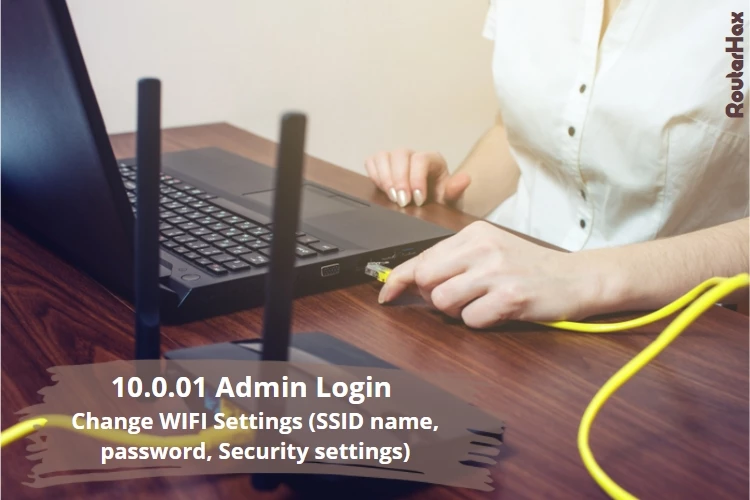by Tommy N.
10.0.0.1 login is an IP used by most router brands as their default gateway & login IP address. 10.0.o.1 login is used to access the router setup page to configure various wireless & security settings. To access the admin panel hit the link below:
Note: 192.168.1.1 and 192.168.0.1 are two other frequently used login IP addresses by routers. You can click on those links trying to access with then if you fail to access your router login page using 10.o.o.1 ! Cheers ! 🙂
| Login | Ratings |
|---|---|
| 10.0.0.1 | |
Sometimes the above default username and password combination does not work. In this case, try to look up from our default router passwords list. Or else, you can also find the login detail in your router's manual. If you have lost your password, try factory reset the router and recover it.
Contents
If you have a router at home, the odds are good that its IP address is 10.0.0.1. This is the most common IP address for home routers and it's what we'll be using as our example in this article.
10.0.0.1 is a private IP address, which means it can only be used inside a private network (like your home). It cannot be used to communicate with devices outside of your home network.
The reason why 10.0.0.1 is such a popular choice for router manufacturers is because it falls within the reserved range of private IP addresses (which includes all addresses from 10.0.0.0 to 10..255.). Using a private IP address is important because it helps to prevent your router from being accessible by anyone on the public Internet.
If your router also comes with 10.0.0.1 admin access, you can quickly login into its admin panel by visiting the IP itself or using the login or admin button provided above.
Let's begin with the features of your WIFI router first to see why you need to access to the 10.0.0.1 login ! 🙂
Once you have access to the router's configuration, there are a number of settings that you can manage. These include:
As you can see, there are a lot of different settings that you can manage once you have access to the router's configuration. This can be useful if you want to change the way your network operates, or if you need to troubleshoot a problem. Knowing what each setting does is crucial in understanding how to configure your router properly. If you're not sure about something, be sure to do some research or ask someone who does know before making any changes.

Here we assume your router's login IP address is 10.0.0.1; otherwise, you will not be redirected and get stuck on the loading page. Or worse, you will receive page not found (404 error) from your browser.
If this is the case, you can easily find the router IP address by looking up your router brand to see its default login IP. Alternatively, you can search for it in the router's manual or its website.
Once you can see the login page of your router, proceed to the next steps.
A router is required to connect your computer to the internet. It typically has both an Ethernet port and a WAN (wide area network) port. The Ethernet port is used to connect the router to your modem, while the WAN port is used to connect the router to the internet.
Your computer / device needs to connect to the router via the Ethernet Port or Wifi.
In order to login to your router, you will need its IP address (10.0.0.1 in this case), username and password. You can usually find this information in the documentation that came with your router. If you can't find it there, you can try looking for it online or contacting the manufacturer directly.
Once you have all of the necessary information, you can proceed with logging in to your router.
Once you are connected to the wireless network of your router and up with all the requirements, you can follow the step by step guide below:
You have successfully logged in and are ready to make changes to your router's configuration and the wireless connection. You will now have access to make a lot of modifications to your wifi connection. Now you can see who's on your wifi, make SSID changes, parental controls, and more. Here's what you can try:
Logging into IP can be complicated for beginners, and there are high chances of facing an error as there are many misspelled versions of 10.0.0.1 ! To avoid any issues, make sure you are trying to log into the IP's correct format; otherwise, you may face the router login face not loading error. Here's is the correct & incorrect format :
However, if you like to keep things simple and easy, you can use the routerhax app (router admin setup) to configure your router and network services. Get access to many features like default gateway checkup, credentials changes, default login and passwords list, and a lot more. You can download the application directly on your iOS as well as on Android device from the app store and google play store link below:
10.0.0.1 is the most common default gateway address for home broadband routers and other network devices.
It's a Class C private IP address, which means it can be used by any device on a local network that's been set up to use this address range.
The 0 in 10.0.0.1 represents the octet of the IP address, which is eight bits long. The 1 at the end is the subnet mask, which indicates which part of the IP address is available for host addresses. In this case, the first three octets are dedicated to the network while the fourth octet is dedicated to hosts on that network.
Some home broadband router manufacturers use different default gateway addresses, such as 192.168.1.1 or 10.0.0.1, but 10.0.0.1 is the most common address.

While 10.0.0.1 is not the only private IP address, it is one of the most commonly used - meaning it's likely the address you'll encounter when setting up a new router. Here are some fun facts about it:
 |
 |
 |
 |

About Tommy N.
Tommy N is a computer security blogger who likes to write about various aspects of the field. He has been blogging for several years and enjoys helping others learn more about keeping their data safe. Tommy is also an avid gamer and loves spending time with his friends and family. Follow Me: YouTube
 |
 |
 |
 |
Promotion for FREE Gifts. Moreover, Free Items here. Disable Ad Blocker to get them all.
Once done, hit any button as below
 |
 |
 |
 |